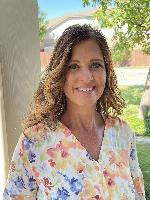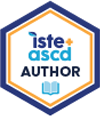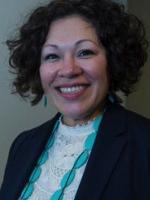

Event Information
For the poster session, we plan to (on-site):
1. Share project information and goals through digital content such as a slide deck and resources (continuously)
2. Engage with participants through conversations to discuss preliminary data analysis and impact results on the CSEL professional development approach and framework (continuously)
3. If the session is virtual, we will deliver our presentation (15-20 minutes), engage with the audience for questions and discussion and share resources
Our presentation shares project goals, purpose, rationale, research design and activities as well as preliminary data analysis of project impact and program evaluation.
Chun, D.M. (2017). Research methods for investigating technology for language and culture learning. In
C.A. Chapelle & S. Sauro [Eds.], The Handbook of technology and second language learning [pp. 393-408]. Hoboken, NJ: Wiley.
Code.org. (2023). Code.org's Approach to Diversity and Equity in Computer Science.
https://code.org/diversity
Every Student Succeeds Act, 20 U.S.C. § 8101 42(B) (2015).
https://oese.ed.gov/offices/office-of-formula-grants/school-support-and-accountability/essa-legislation-table-contents/title-viii-general-provisions/congress.gov/114/plaws/publ95/PLAW-114publ95.pdf
Goode, J., Skorodinsky, M., Hubbard, J., & Hook, J. (2020). Computer science for equity: Teacher
education, agency, and statewide reform, 1-12.
Harmsworth, S., Turpin, S., Rees, A., Pell, G., TQEF National Co-ordination Team (2001). Bridging the
Gap Innovations Project. Creating an Effective Dissemination Strategy. An Expanded Interactive Workbook for Educational Development Projects. Centre for Higher Education Practice: Open University.
Illinois State Board of Education. (2022, June). English learners in Illinois: SY2020-2021 Statistical
Report. https://www.isbe.net/Documents/English-Learners-Stat-Report-SY2021.pdf
Illinois State Board of Education. (2022, August 9). LEA Self-Assessment Monitoring Report.
https://www.isbe.net/Documents/LEA-Self-Assess-Report-OnSite.pdf
Israel, M., Pearson, J.N, Tapia, T., Wherfel, Q.M., & Reese, G. (2015). Supporting all learners in
school-wide computational thinking: A cross-case qualitative analysis. Computers & Education, 82, 263-279.
Jacob, S., Nguyen, H., Tofel-Grehl, C., Richardson, D., & Warschauer, M. (2018). Teaching computational
thinking to English learners. NYS TESOL Journal, 5(2), 12–24.
Jacob, S.R. and Warschauer, M. (2018). Computational thinking and literacy. Journal of Computer
Science Integration, 1(1). http://doi.org/10.26716/jcsi.2018.01.1.1
Kapor Center. (2021, June 24). Culturally Responsive-Sustaining Computer Science Education: A
Framework. https://www.kaporcenter.org/wp-content/uploads/2021/06/1_CRCSFramework-Report_v7_for-web-redesign-.pdf
Kessler, G. (2010). When they talk about CALL: Discourse in a required CALL class. CALICO Journal,
27(2), 1-17.
Kessler, G. & Hubbard, P. (2017). Language teacher education and technology. In C.A. Chapelle & S.
Sauro [Eds.], The Handbook of technology and second language learning [pp. 278-292]. Hoboken, NJ: Wiley.
Lieberson, S. (2000). Small N’s and big conclusions: An examination of the reasoning in comparative
studies based on a small number of cases. In R. Gomm, M, Hammersley, & P. Foster [Eds.], Case study method [pp. 208-222]. Thousand Oaks, CA: Sage.
Madkins, T.C., Martin, A., Ryoo, J., Scott, K.A., Goode, J., Scott, A., McAlear, F. (Eds.). (2019). Culturally
relevant computer science pedagogy: From theory to practice. In J. Payton, T. Barnes, N. Washington, F. Stukes, & A. Peterfreund (Eds.), Proceedings of the 2019 Research on Equity and Sustained Participation in Engineering, Computing, and Technology, RESPECT 2019. Institute of Electrical and Electronics Engineers Inc.. https://doi.org/10.1109/RESPECT46404.2019.8985773
Miles, M.B., Huberman, A.M., & Saldaña, J. (2014). Qualitative data analysis: A methods sourcebook.
[3rd ed.]. Thousand Oaks, CA: Sage.
National Center for Education Statistics. (2022). English Learners in Public Schools. U.S. Department of
Education, Institute of Education Sciences. https://nces.ed.gov/programs/coe/indicator/cgf.
Pozos, R.K., Severance, S., Denner, J., & Tellez, K. (2022). Exploring design principles in computational
thinking instruction for multilingual learners. Teachers College Record, 124(5), 127-145.
Ryoo, J.J. (2019). Pedagogy that supports computer science for all. ACM Transactions on Computing
Education, 19(4), 1-23.
Ryoo, J.J., Goode, J., & Margolis, J. (2016). It takes a village: Supporting inquiry- and equity-oriented
computer science pedagogy through a professional learning community. Computer Science Education, 1-20.
Ryoo, J. J., Margolis, J., Lee, C. H., Sandoval, C. D. M., & Goode, J. (2013). Democratizing computer
science knowledge: Transforming the face of computer science through public high school education. Learning, Media, and Technology, 1–21.
Saldaña, J. (2016). The Coding Manual for Qualitative Researchers. [3rd ed.]. Thousand Oaks, CA: Sage.
Stufflebeam, D.L. (2001). CIPP evaluation model checklist: A tool for applying the CIPP model to assess projects and programs. Retrieved from https://wmich.edu/evaluation/checklists
Ware, P. (2017). Technology, new literacies, and language learners. In C.A. Chapelle & S. Sauro [Eds.],
The Handbook of technology and second language learning [pp. 265-227]. Hoboken, NJ: Wiley.
Warschauer, M. (2007). A teacher’s place in the digital divide. Yearbook of the National Society for the
Study of Education Annual Yearbook, 106(2), 147-166.
Warschauer, M., Knobel, M., & Stone, M. (2004). Technology and equity in schooling: Deconstructing the
digital divide. Educational Policy, 18(4), 562-588.
Winke, P. & Goertler, S. (2008). Did we forget someone? Students’ computer access and literacy for
CALL. CALICO Journal, 25(3), 482-509.



